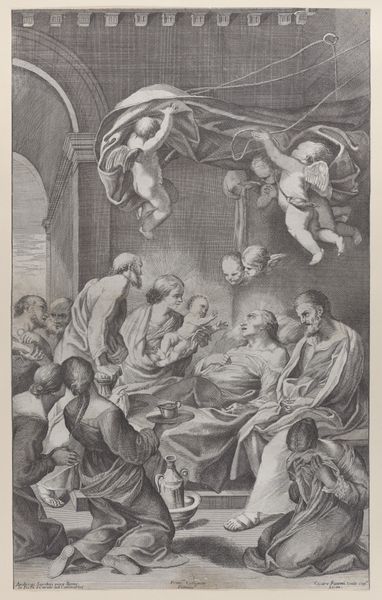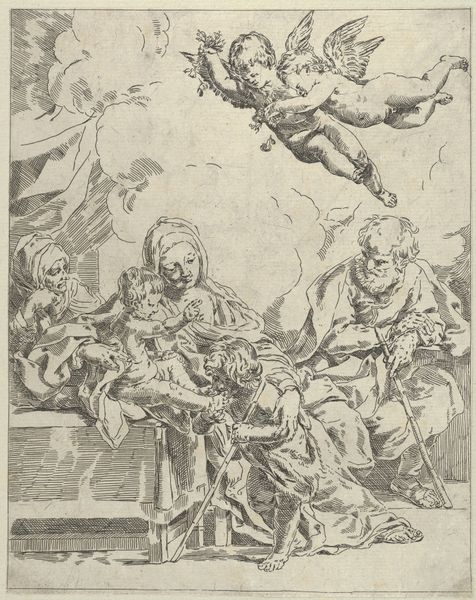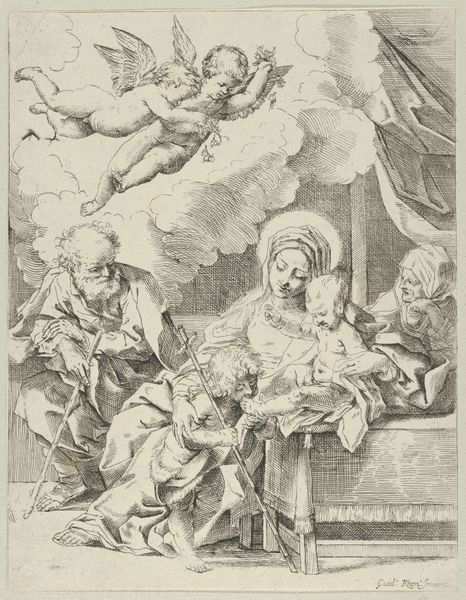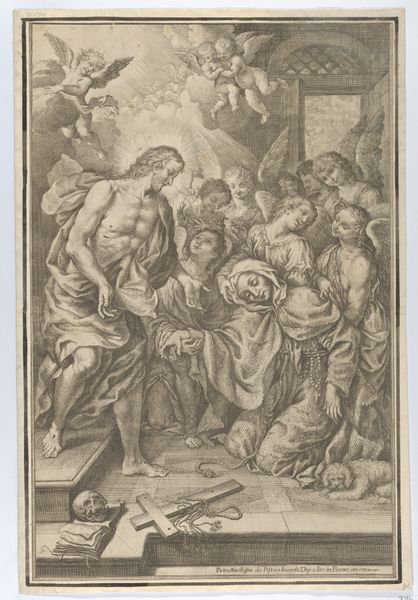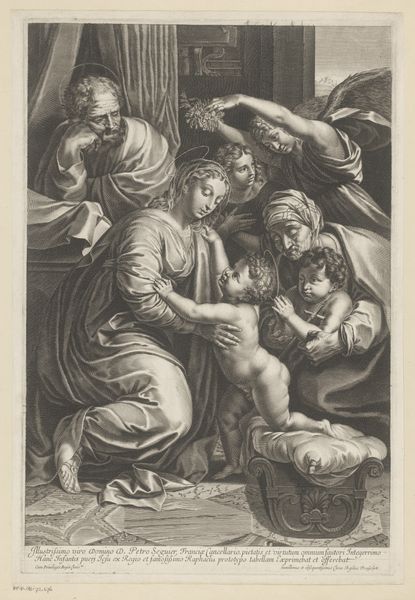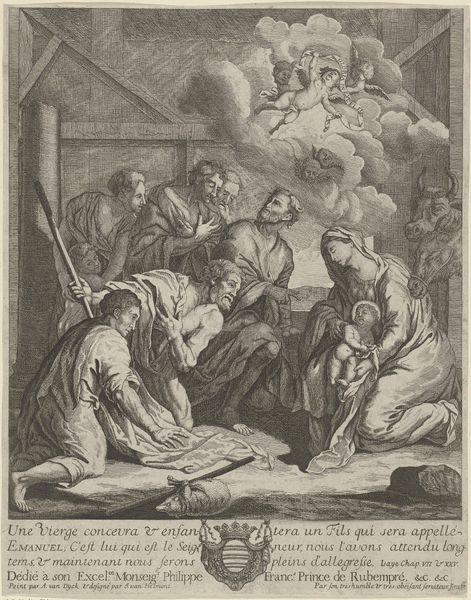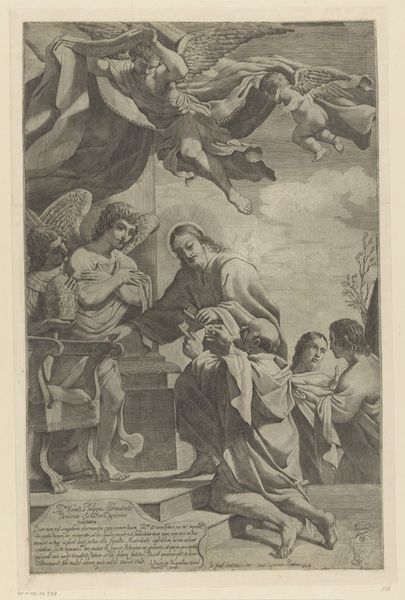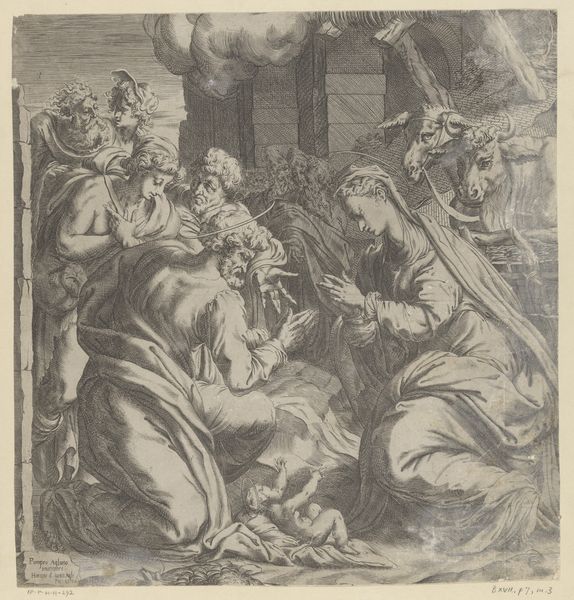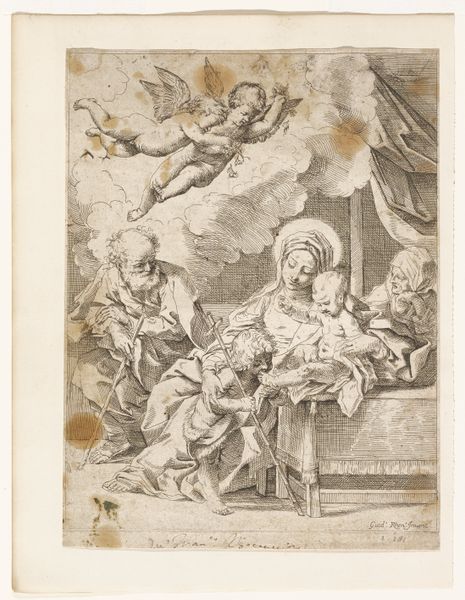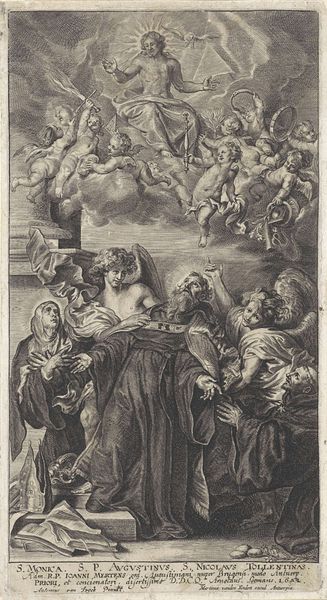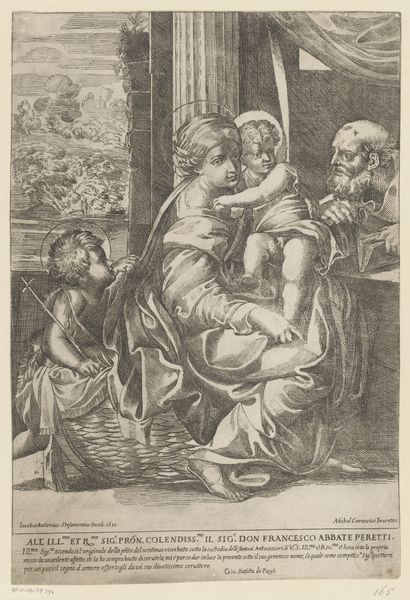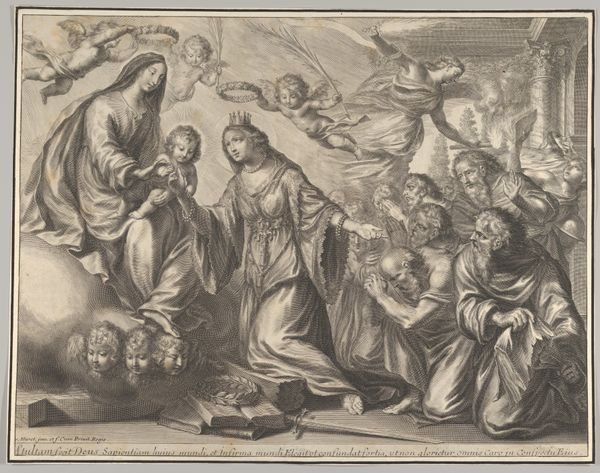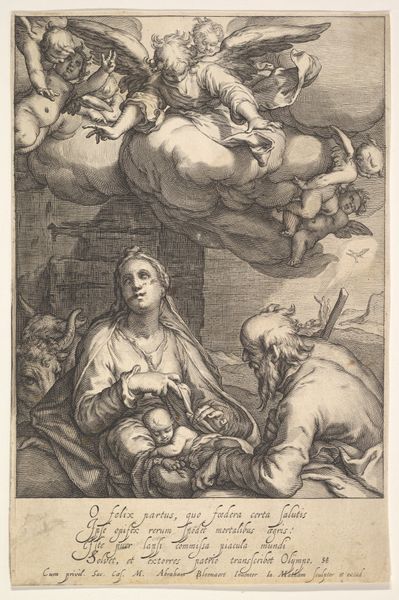
The Holy Family with young John the Baptist and Saint Elizabeth, two angels above, after Reni 1585 - 1615
0:00
0:00
Dimensions: Sheet (Trimmed): 10 in. × 7 3/8 in. (25.4 × 18.7 cm)
Copyright: Public Domain
Curator: Welcome. Here we have an engraving, "The Holy Family with young John the Baptist and Saint Elizabeth, two angels above, after Reni," dating roughly between 1585 and 1615. Editor: The scene feels incredibly intimate, yet staged. There's a theatricality to the light and shadow, the arrangement of figures, almost like a tableau vivant. Curator: Yes, the composition is meticulously crafted. Note the use of line: the engraver’s skill creating depth, shadow and volume in this essentially two-dimensional medium, working within a style reminiscent of Renaissance idealism. The forms are rendered with precision and clarity, and how this use of line directs the eye, culminating with the soft, aerial touch given the cherubic figures hovering above. Editor: That idealized vision of family, though, it feels rooted in a very specific power structure. Mary, centered and radiant, the infant Jesus reaching out—but who is centered in that dynamic? Are women, such as Mary and Saint Elizabeth, here simply tools, vessels, of reproduction and the patriarchal religious structure of its time? I also question the placement and representation of Saint Elizabeth who, as a mature woman, is placed into the background in both rendering and narrative importance. Curator: That's a fair point to consider. However, looking purely at the formal aspects, the artist utilizes the flowing lines of the drapery and figures to unify the composition. Observe how these lines connect the figures, creating a harmonious flow from the angels above to the Holy Family below, which is contained by the engraver's fine draftsmanship. Editor: The work speaks of societal norms of its time and class. We need to confront the narrative being presented as ideal and examine how such ideals influence social behavior today. What this work presents through both symbol and aesthetic is as an articulation of faith but simultaneously is of class, race and gender. Curator: Certainly, your analysis offers valuable socio-historical layers. But also appreciate its formal qualities, like the delicate gradations of light and shadow the artist has created, evoking both a sense of the divine and a tangible sense of form. It is this mastery of technique, these formal decisions, which allow it to retain such power as both document and object today. Editor: Perhaps, and such mastery becomes problematic as its elegance distracts from the inequitable social constructs subtly expressed and emphasized by the art’s success. Curator: It seems the power of this piece lays in that contrast: simultaneously evocative of a divine narrative and a specific power dynamic. Editor: It makes you question everything this small, reproduced moment stands for.
Comments
No comments
Be the first to comment and join the conversation on the ultimate creative platform.
